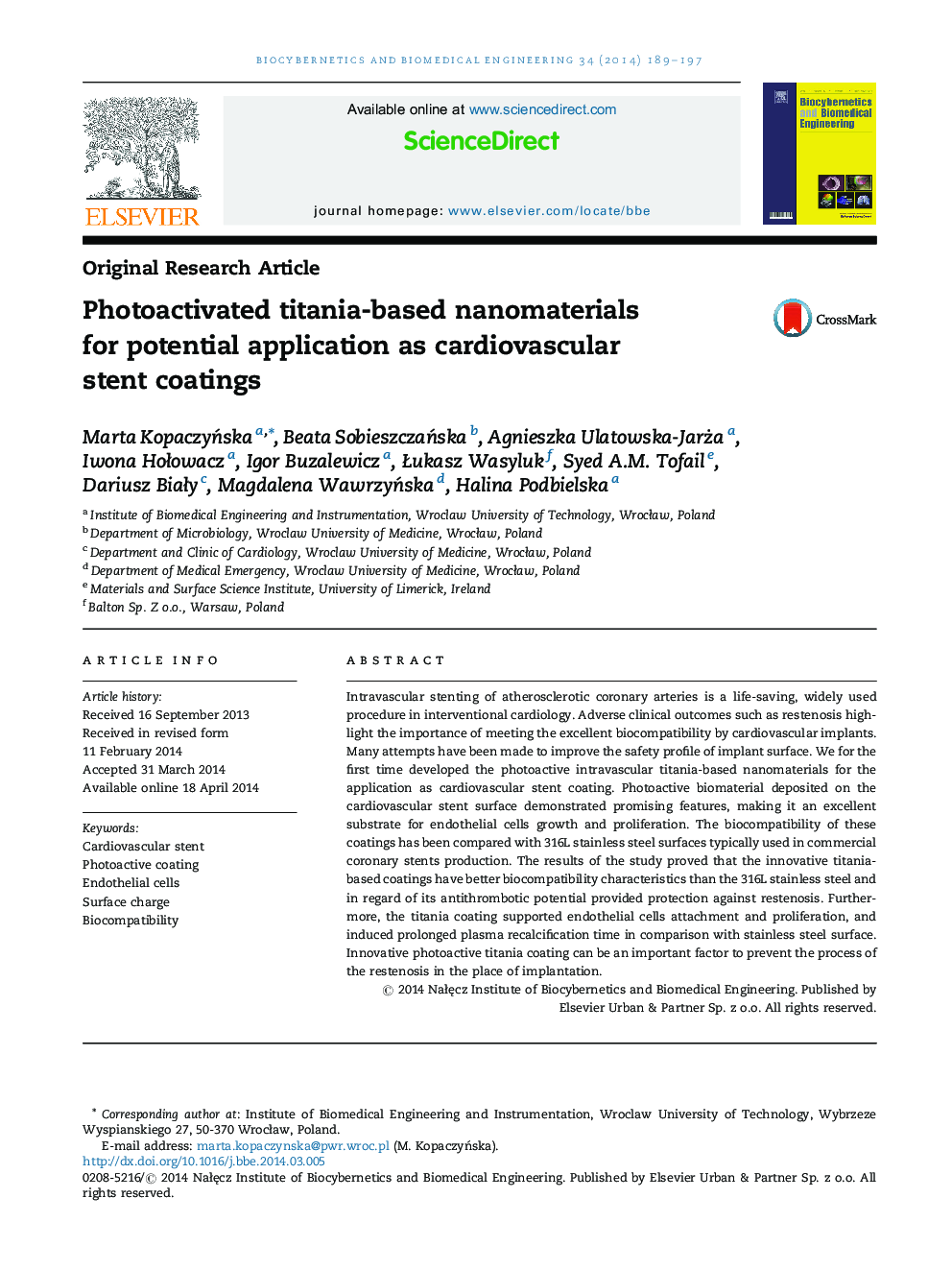| Article ID | Journal | Published Year | Pages | File Type |
|---|---|---|---|---|
| 5218 | Biocybernetics and Biomedical Engineering | 2014 | 9 Pages |
Intravascular stenting of atherosclerotic coronary arteries is a life-saving, widely used procedure in interventional cardiology. Adverse clinical outcomes such as restenosis highlight the importance of meeting the excellent biocompatibility by cardiovascular implants. Many attempts have been made to improve the safety profile of implant surface. We for the first time developed the photoactive intravascular titania-based nanomaterials for the application as cardiovascular stent coating. Photoactive biomaterial deposited on the cardiovascular stent surface demonstrated promising features, making it an excellent substrate for endothelial cells growth and proliferation. The biocompatibility of these coatings has been compared with 316L stainless steel surfaces typically used in commercial coronary stents production. The results of the study proved that the innovative titania-based coatings have better biocompatibility characteristics than the 316L stainless steel and in regard of its antithrombotic potential provided protection against restenosis. Furthermore, the titania coating supported endothelial cells attachment and proliferation, and induced prolonged plasma recalcification time in comparison with stainless steel surface. Innovative photoactive titania coating can be an important factor to prevent the process of the restenosis in the place of implantation.
